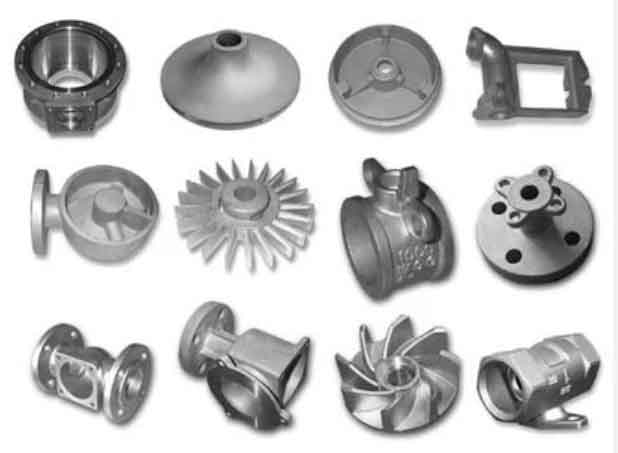Modern marine engine cylinder heads represent one of the most demanding applications for ductile iron casting, requiring exceptional mechanical properties and structural integrity. This article presents a comprehensive analysis of defect formation mechanisms and optimization strategies based on industrial case studies, focusing on achieving consistent quality in complex geometry castings.

1. Solidification Challenges in Ductile Iron Casting
The mushy zone formation characteristic of ductile iron casting creates unique challenges:
$$
\frac{\partial T}{\partial t} = \alpha \left( \frac{\partial^2 T}{\partial x^2} + \frac{\partial^2 T}{\partial y^2} + \frac{\partial^2 T}{\partial z^2} \right) + \frac{L}{C_p} \frac{\partial f_s}{\partial t}
$$
Where:
T = Temperature (K)
t = Time (s)
α = Thermal diffusivity (m²/s)
L = Latent heat (J/kg)
C_p = Specific heat (J/kg·K)
f_s = Solid fraction
| Property | Value | Unit |
|---|---|---|
| Liquidus Temperature | 1,150-1,200 | °C |
| Solidus Temperature | 1,050-1,100 | °C |
| Latent Heat | 270-300 | kJ/kg |
2. Critical Defects and Mitigation Approaches
2.1 Shrinkage Defect Control
The cooling rate differential in ductile iron casting can be expressed as:
$$
Q = \frac{k \cdot A \cdot \Delta T}{d}
$$
Where:
Q = Heat flux (W)
k = Thermal conductivity (W/m·K)
A = Surface area (m²)
ΔT = Temperature gradient (K)
d = Chill thickness (m)
| Material | Conductivity (W/m·K) | Shrinkage Reduction |
|---|---|---|
| Chromite Sand | 2.5 | 72% |
| Steel Chill | 45 | 68% |
| Graphite | 120 | 65% |
3. Gas Defect Prevention
The gas evolution model in ductile iron casting cores:
$$
V_g = \frac{P \cdot V_m}{R \cdot T} \cdot \left(1 – e^{-kt}\right)
$$
Where:
V_g = Gas volume (m³)
P = Core gas pressure (Pa)
V_m = Molar volume (m³/mol)
R = Gas constant (J/mol·K)
T = Temperature (K)
k = Decomposition rate constant (s⁻¹)
t = Time (s)
| Parameter | Baseline | Optimized |
|---|---|---|
| Baking Temperature | 150°C | 180°C |
| Baking Duration | 2 hr | 4 hr |
| Gas Evolution | 12.5 ml/g | 4.2 ml/g |
4. Process Implementation Results
The final ductile iron casting process achieved:
$$
\eta = \frac{N_{defect-free}}{N_{total}} \times 100\% = \frac{392}{400} \times 100\% = 98\%
$$
Key mechanical properties enhancement:
| Property | Before | After |
|---|---|---|
| Tensile Strength | 450 MPa | 550 MPa |
| Elongation | 12% | 18% |
| Porosity Level | ASTM C3 | ASTM C1 |
5. Conclusion
Through systematic analysis of solidification dynamics and gas evolution mechanisms in ductile iron casting, this study demonstrates that strategic chill placement combined with core process optimization can effectively control defect formation in complex geometry castings. The implemented solutions improved production yield from 80% to 98% while enhancing mechanical properties, proving essential for high-performance marine engine applications.
